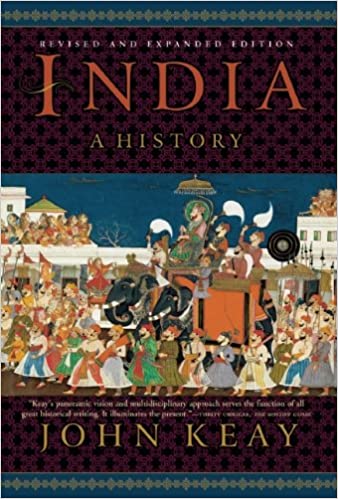John Keay, India: A History (2000)
John Stanley Melville Keay, Fellow of the Royal Geographic Society, is a particular kind of Englishman (man is used here intentionally) who is decent enough to know that the British Empire was a monstrosity but also deep down pines for a time when you could still think it was marvelous. He’s written admirable histories of India and China, but most of his works are about the heroic activities of intrepid white men in the Orient: Himalayan exploration, the great trigonometric survey of India, the spice route, the English East India Company, the end of the British Empire across Asia. While Keay doesn’t shy away from showing these explorers and colonizers as venal and nasty, the focus stays on them. Still, no one else is writing these studies, and if you want a one-volume history of India, Keay is what you’ll find.
India: A History has a dutiful quality about it. Keay loves a ripping good yarn, God bless him, and in India there are none until at least the Muslim period. Before that, the only textual resources we have are triumphal inscriptions and numismatics, unless you want to buy into the Sanskrit epics as history. Keay makes the best of all the toing-and-froing of various Guptas and Mauryas and Vijayanagars, but you can tell he’s bored, even as he tries to tie it all to bits of architecture to give it some interest. His relief is palpable once he gets to the Mughals and Rajputs, for which there are texts with stories, and his account of the Indian independence years is useful in understanding India today. Post-independence India gets a whirlwind postscript, but after some six thousand years, you can forgive him that.
Plowing through this tome (again) felt like a chore, and I’m not sure how useful any of it will actually be to my writing, but I can now say, like a good, responsible author, that I have read a history of the country I’m writing about. And if that history has a whiff of the pucca sahib about it, well, so does the country.

